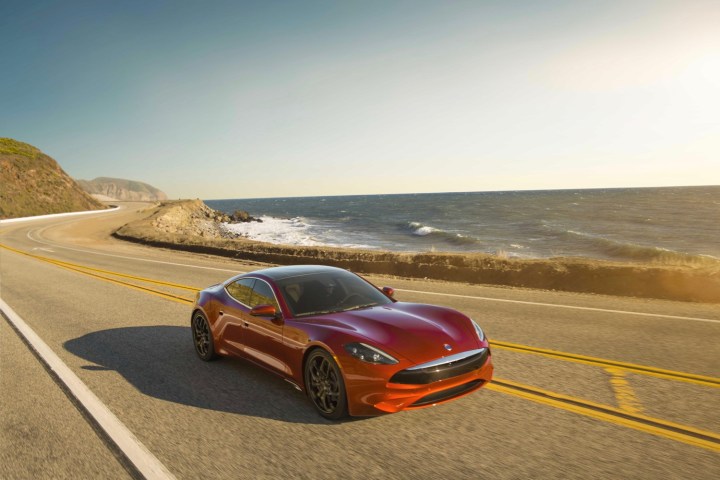
The 2020 Karma Revero GT plug-in hybrid represents a major overhaul of a design that dates back almost a decade. German audio company Sennheiser used the updated car as a platform to demonstrate its 3D surround-sound tech, creating a one-off audio system that will be demonstrated in a Revero GT at the 2019 Pebble Beach Concours d’Elegance.
The system is based on Sennheiser’s existing Ambeo home audio systems, which are able to use a handful of individual speakers to create a 3D effect. But adapting that technology to a car was challenging. It took Sennheiser more than two years to design the automotive version, according to a company press release. A car is much more challenging environment for making high-quality sound than is a living room, according to the company.
“We almost had to start from zero, with the objective of not only bringing a good solution to market, but creating the very best available,” Véronique Larcher, director of Ambeo immersive audio at Sennheiser, said in a statement.
Sennheiser placed speakers throughout the car — including the headrests — along with a subwoofer, and used its own “upmix” algorithm to coordinate the playing of audio through them. The algorithm can achieve a 3D effect even without specific 3D audio sources, according to Sennheiser. Users can adjust settings to their preference, and the system also has a function for screening background noise out of phone calls, according to Sennheiser.
The Revero GT itself is a luxury plug-in hybrid that mostly relies on electric power, but features a small gasoline engine on board as backup. The BMW-sourced 1.5-liter turbocharged three-cylinder engine primarily acts as a generator, while two rear-mounted electric motors provide most of the propulsion. The Revero GT boasts 536 horsepower and 560 pound-feet of torque, which should get it from 0 to 60 mph in 4.5 seconds, according to Karma. The company also claims the Revero GT will be able to drive on electric power alone for up to 80 miles.
The design of the Revero GT is based on the Fisker Karma, which debuted in 2012. Fisker Automotive made about 2,000 cars before going bankrupt. The remains of the company were bought by Chinese auto-parts conglomerate Wanxiang in 2014, and reconstituted into Karma Automotive. The car was subsequently put back into production as the Karma Revero, with the 2020 Revero GT representing its first significant update.
California-based Karma Automotive hopes to expand beyond the Revero. It recently unveiled two flashy concept cars to signal that possible future direction. Meanwhile, Henrik Fisker, the automotive designer who created the Fisker Karma/Karma Revero, has started a new company of his own that focuses on all-electric cars.
Updated on August 8, 2019: After this article was originally published, Karma reached out to clarify that the Sennheiser audio system will not be in the production Revero GT.


